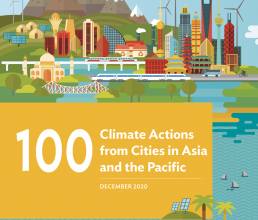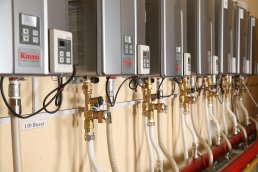First appeared in

Asian Development Bank
100 Climate Actions from Cities in Asia and the Pacific
Mongolia’s capital is exploring alternatives to coal to heat homes throughout the harsh winters, reducing the smog that currently blankets the city during winter months.
Mongolia’s capital is exploring alternatives to coal to heat homes throughout the harsh winters, reducing the smog that currently blankets the city during winter months.
The city of Ulaanbaatar is taking a range of measures to reduce the reliance on household coal consumption that is currently the biggest cause of air pollution in the city.
10K
APPLICATIONS FOR INSTALLATIONS
APPLICATIONS FOR INSTALLATIONS
To complement this approach, the Mongolian gas company, Gas Service Corporation of Mongolia (GASCOM), is offering affordable loans to low-income residents to replace coal burners with gas. GASCOM is offering residents to change from coal to gas-fired stoves for heating and water. The company is also retrofitting larger buildings including schools and hospitals.
Although still using fossil fuels and not a sustainable long-term solution, gas-fired stoves can help the capital city reduce its reliance on coal and lead to greenhouse gas reductions. Burning coal in homes is one of the leading causes of air pollution, which reaches dangerous levels in the winters when temperatures can reach -40°C and demand for energy is highest. The company reports to have already received more than 10,000 applications for the gas-fired equipment.

Ulaanbaatar is Mongolia’s capital city, home to 1.4 million people (photo by Gas Service Corporation of Mongolia).
The Challenge
Coal use is still widespread in Ulaanbaatar, particularly for residents living in off-grid traditional nomadic dwellings called Gers. This is a leading cause of air pollution in the Mongolian capital.
Co-Benefits
Economic To help with costly installation fees, the government has provided green loans to 300 households, and GASCOM is adding to this effort, to help more make the transition from coal to gas.
Health Gas is a cleaner burning fuel alternative to coal that can help communities transition to renewables and improve air quality, reducing the associated health risks such as respiratory diseases.

